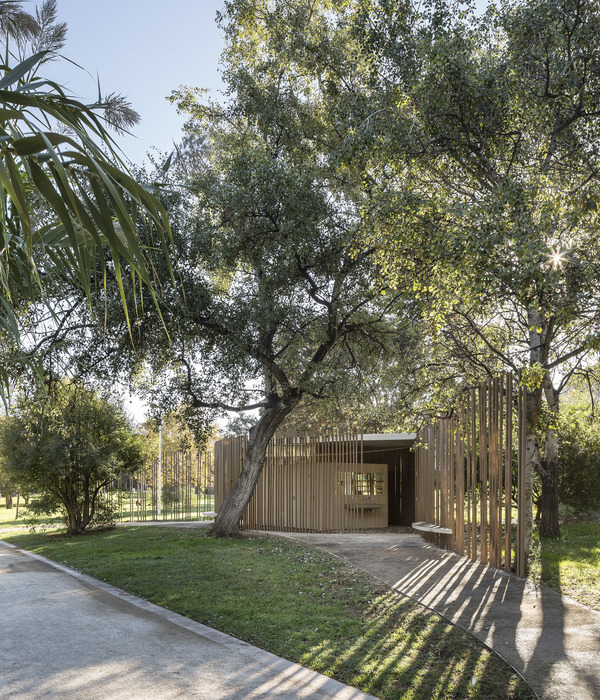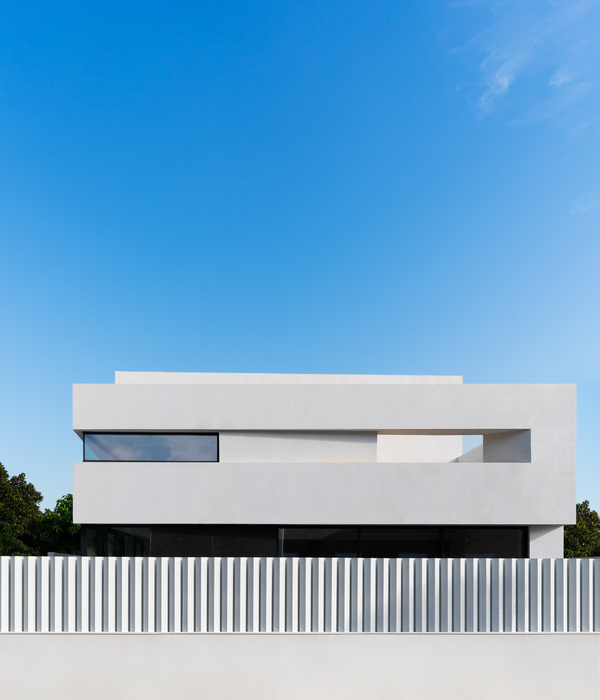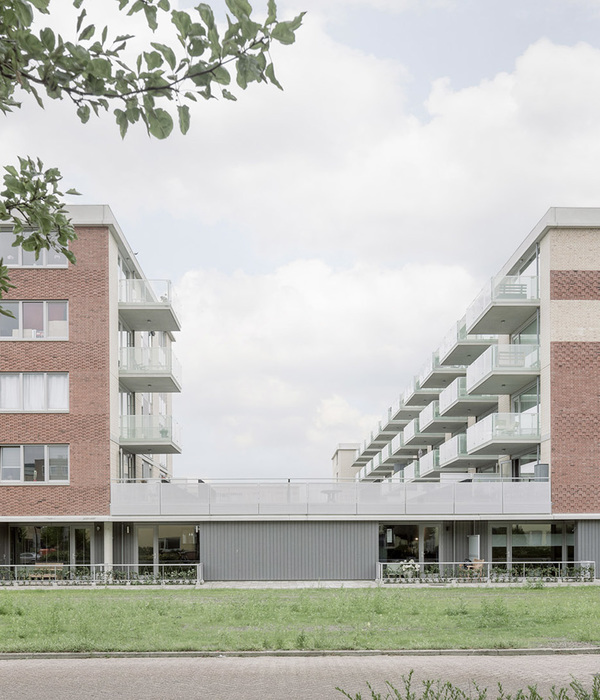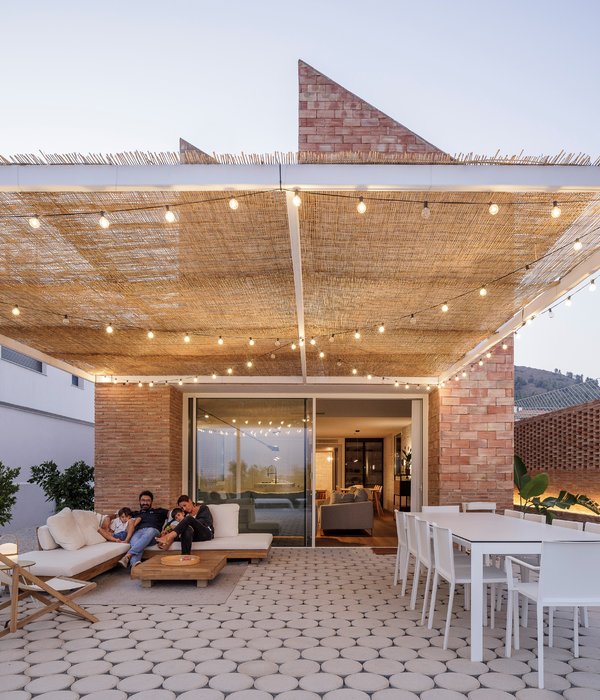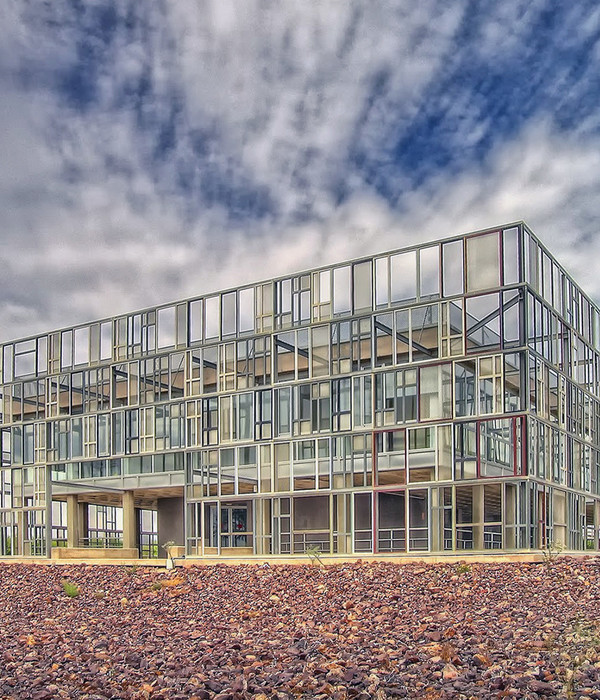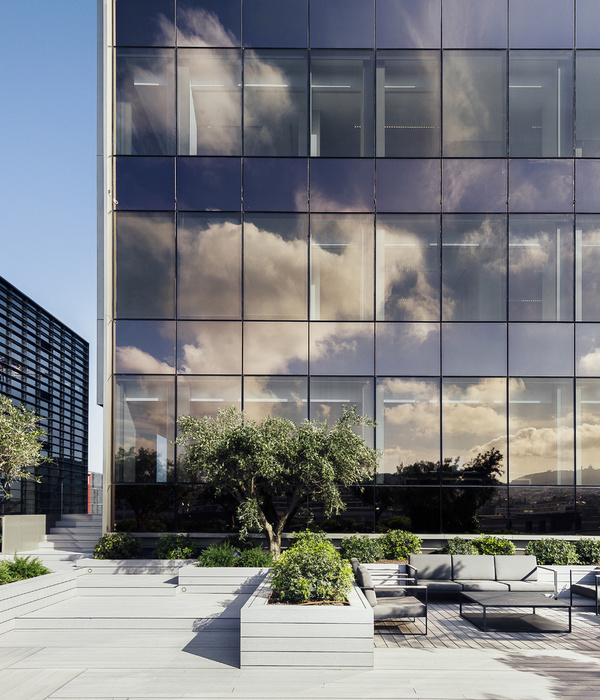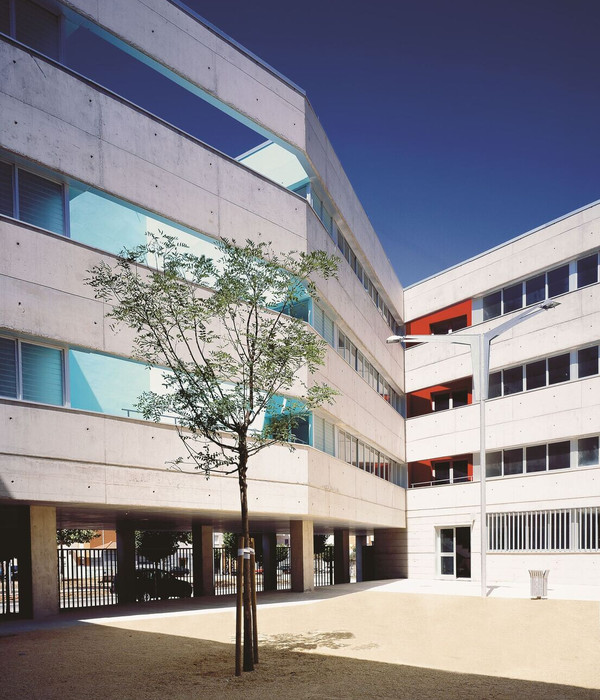该项目为一家位于墨西哥图卢姆南部的Aldea Zamá的机构而开发,包括设计一座拥有18套公寓的度假楼。场地以热带植被和柔软的土地为特征,位于距离海滨几百米的地方。植被包括原生灌木和高大的棕榈树,其中大部分需要保护。在主楼层可以看到花园般的野生植被全景,从上层则可以看到树冠与海景。
The project consists of designing an 18-apartment block for holiday purposes for a developing agency located in Aldea Zamá, in southern Tulum, México. The site is characterized by tropical vegetation and a soft ground, it is located some hundred meters from the main beachfront. The vegetation includes native bushes and tall palm-trees, most of them needing to be preserved. An all-around view of a wild garden-like vegetation can be seen on the main floor, and from the upper levels the tree canopy and ocean views are visible.
▼建筑外观,appearance of the building
▼森林中的建筑,building in the forest
▼街道视角,view from street
▼建筑立面,building facade
为实现邻居间的最大化隐私,以及考虑到未来的建设,该方案将建筑体量置于场地中央。带着给每个公寓单元创造室外私人空间的想法,我们在一楼布置了6个独立的单层公寓,每个公寓都能通向专属花园。其他12个单元则拥有两层生活空间,私人区域在第二层,公共区域则在第三层。从第三层到屋顶的对话为每个公寓提供了一个私人的室外空间,可以一览丛林的景色。
The scheme was to place the building-block in the middle of the site in order to achieve the most privacy from neighbors and future constructions and with the idea of generating an exterior private space for each of the apartment units, we arranged a set of six separate one-story apartments on the ground floor, each with private access to its own garden. The other 12 units were arranged into two-story living spaces, private areas on the second and public on the third level. A dialogue from the third to the rooftop provides each of the apartments a private exterior space with the sweeping views of the jungle.
▼立面局部,facade detail
▼入口区域,entrance area
▼细部,detail
最终方案减少了交通空间的面积,同时保留了建筑语言。一层连同楼梯、服务单元和浴卫生间,大部分都是对街道封闭,对花园则开放。第二层在各个立面都是最封闭的,这里是复式公寓的私人楼层。第三层是一个半开放的空间,立面为木制百叶窗,保护房间免受风雨侵袭。复式住宅的公共区域及其与屋顶的关系由木框架结构确定。
The result is a reduced number of square meters in circulation spaces, while retaining the architectural language as result of the scheme. The ground floor, along with the staircases, service units and bathrooms, are mostly enclosed to the street and completely open to their gardens. The second level is the most enclosed within both facades where the private areas of the duplex are located. The third level is a semi-open space with wooden louvers on the facades to protect the rooms from rains and strong winds. The public areas of the duplexes and their relationships to the rooftops are defined by wooden frames.
▼首层公寓起居室概览,overview of single-storey apartment living space
▼起居室局部,living space detail
▼上层起居室概览,overview of upper floor apartment living space
▼楼梯细部,staircase detail
以自然为主角,将建筑最小化、中性化,只运用三种天然材料,木材、裸露混凝土以及chukum。chukum树是一种半硬木带刺树,遍布尤卡坦半岛,也被用于纺织品染色和制革。为制作chukum灰泥,要将树上的树皮煮沸两次,然后与水泥混合,之后它可以用装饰混凝土墙表面,甚至包括游泳池。chuukum树皮自然地赋予了灰泥以朴实、自然的色彩,创造出一种典型的尤卡坦地区的温暖、质朴的氛围。
Leaving nature as the protagonist, the architecture is minimal and neutral, having only 3 natural materials, wood, washed concrete, and chukum. The chukum tree is a semi-hardwood thorny tree found throughout the Yucatan peninsula, used also for dying textiles and tanning leather. To create chukum stucco, bark from the tree is boiled twice and then mixed with cement, after which it can be used for finishing concrete walls or even swimming pools. The chukum bark also naturally gives the stucco its earthy, natural color, creating a warm, rustic atmosphere typical of the Yucatan region.
▼一层公寓的私人庭院,private garden of ground floor apartment
▼从庭院望向室内,view from garden towards interior
▼上层公寓的私人屋顶花园,private roof garden of upper floor apartment
▼夜景外观,appearance at night
▼首层平面图,ground floor plan
▼二层平面图,first floor plan
▼三层平面图,second floor plan
▼屋顶花园平面图,roof garden plan
▼屋顶平面图,rooftop plan
Project name:BAI-HA
Location:Tulum, Quintana Roo, Mexico
Year:2021
Area:2,580 sqm
Firm:PPAA
Team:Pablo Pérez Palacios, Miguel Vargas, Andrés Domínguez, César Pérez, Adán García, Frida Mouchlian, Sergio Delgado, Juan Pablo Uribe
Website:
Instagram: @perez_palacios_aa
Facebook: @perezpalaciosppaa
Photography:Rafael Gamo
{{item.text_origin}}

